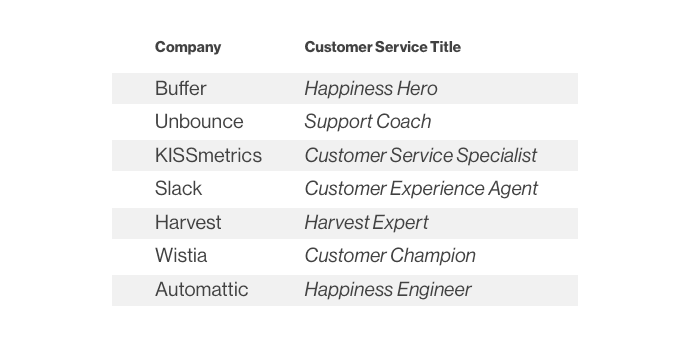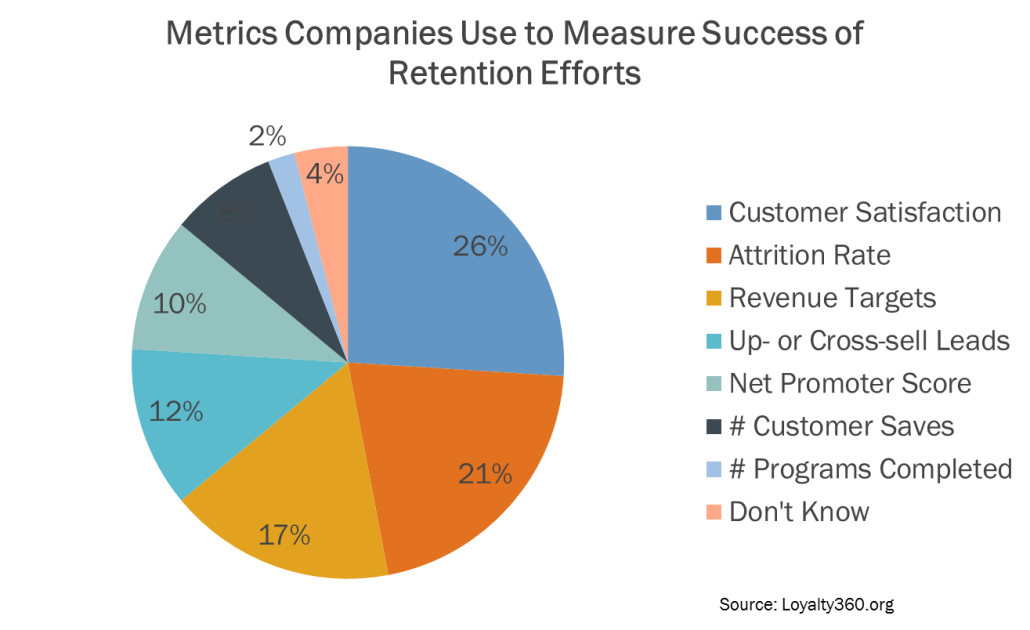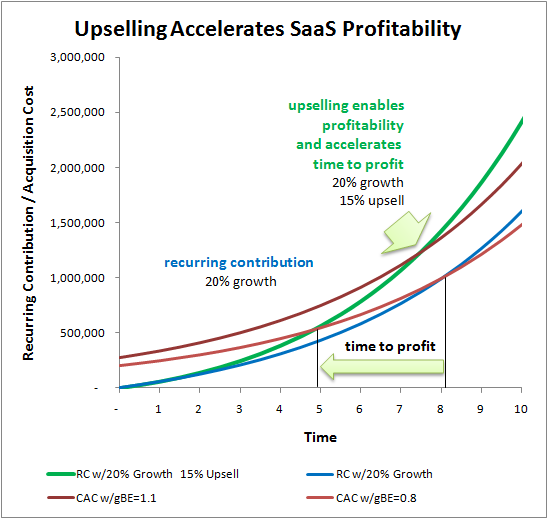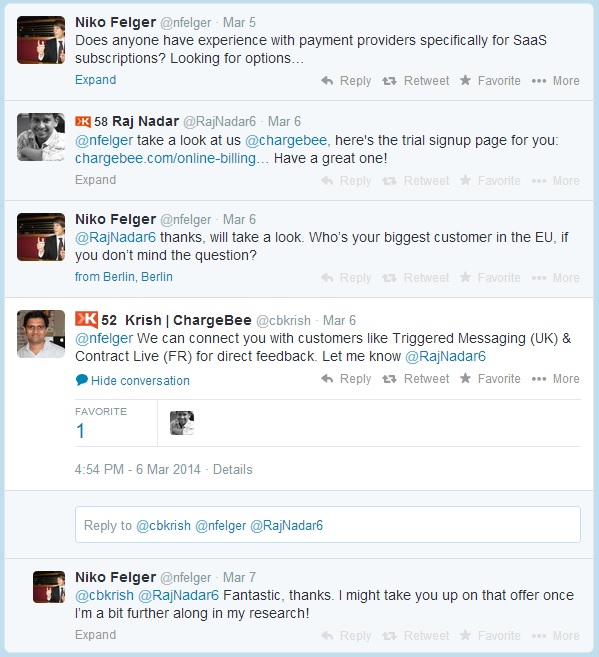It doesn’t matter how amazing your B2B SaaS product is, if you can’t get customers to stay. Keep them with customer retention strategies.
While gaining new customers is important, the most successful SaaS brands have mastered the art of both acquisition and retention, to great results.
So why does it matter, you might be asking? If you replace lost customers with brand new customers every month, you’re set, right?
Wrong.
First, look at the cost. For the vast majority of businesses out there keeping a customer is far cheaper than getting a new one.
You could be churning through thousands of dollars by focusing on getting new customers over keeping the ones you’ve got happy.
Something to think about if your brand is struggling to slow down the churn.
Second, it’s been proven that current customers are far more likely to keep buying from you, and at a higher rate, than new customers. If you focus only on acquisition you’re leaving money on the table.
Now, the key is, how do you stop it?
That’s where this post comes in. Here, we’re going to cover some of the best customer retention strategies B2B SaaS brands can use to bring in more sales and stop the churn.
There are more ideas, strategies and tactics in this article on growth marketing case studies, too.
Here we go.
1. Onboarding
All too often, this is the forgotten step in the process. Big mistake.
When your customers realize the value and potential your service provides them from day one, they are likely to stay longer and increase their customer lifetime value.
So, how to get there?
Have your own game plan of what your customer path looks like. It can’t just be converting them from free customer to paying customer, it might be great for you, but likely doesn’t solve their problems.
2. Customer Support
Stop hiding from your customers. The most successful B2B SaaS brands are those that fully engage with their users.

Photo: Groove
That doesn’t mean being all in until they switch to paying customers. That means following up every step of the way. So much of churn is directly related to users experiencing a lack of service and support.
Avoid that by going above and beyond when it comes to service. Follow up on help requests to ensure a satisfactory outcome, and then follow up again weeks later to see if the customer is still happy or needs anything else from you.
3. Think Like the Customer
You may think your SaaS is awesome and perfect. Well, that’s great, but you created it. There could be massive holes where new users are getting lost, discouraged, or frustrated with the product. All huge red flags you need to avoid.
Counteract potential issues by constantly refining your support and documentation, as well as the expectations you’re setting for your customers.
The more you can mimic and understand their actual experience as opposed to assume what will happen, the better off you’ll be.
4. Follow Up on Inactive Users
Having a customer sign up for your SaaS is just the first step. The next is actually getting them to use it. And, that can be more difficult than it sounds.
Don’t let the inactive users fall through the cracks. At the same time, don’t assume everyone who signs up for your service is going to jump in and use it right away.
Take the proactive approach. Offer an original follow up a few days after the first customer contact, then follow up again with a free consultation.
5. Surprise and Delight
Let’s face it, who doesn’t love getting a discount or special bonus from a product or service you use and love? No one.
So capitalize on that. Choose to highlight just how awesome your customer service is by leaving customers surprised and delighted with free stuff.
Some ideas:
- A free month of service
- A free upgrade to the next level
- Extending a free trial another month
- More storage
- A discount on a yearly subscription
- A free consultation
Something like this which is a small cost for your brand upfront, can be the thing that tips the scales in your favor for customer retention.
6. Know Your Metrics
Each brand tracks success differently. The key is locking down what your key performance indicators and metric of success actually are.

Photo: Loyalty360
When you understand what you are going to specifically be tracking, you can build strategies and campaigns around your current baselines and go from there. It should be more than just revenue.
7. Response Rate
Hand in hand with providing customer service is having a quick response rate. The last thing you need is having a customer who is already frustrated feel like no one is listening to them and doesn’t want to help.
Depending on the size of your team, work on assigning a specific customer service person to each customer so they have someone to deal with personally.
Also have hard limits on the response time if you can get a response within 24 hours, strive to make that standard across your customer service team.
8. Listen
Keep hearing the same complaints over and over again about your product? Turns out it’s not them, it’s you.
Keep an ear to what your customers are saying. That could be searching for your brand on social media and see what people are saying, it could be having a few key questions you ask during phone calls with customers, or even during an exit interview.
You can learn quite a bit on the things that work, and the gaps that don’t by listening to what you customers say and implementing changes to fix it.
9. Share Your Best Tips
An email marketing plan can be a SaaS retention team’s best friend. You want to walk the line between not overwhelming users with follow up emails, and actually providing them something of value.

Photo: Ninja Outreach
Brands that set up a campaign designed to educate users on their best tips, or showcase cool hacks their service can do go a long way. This can also serve as a way to help onboard and indoctrinate users into fully embracing your service over the long run.
10. Track Credit Cards
This is a lesson in making things easy for your customers. Research has found that credit cards typically expire every three years.
We’ve all had that experience where a card has expired and suddenly our inboxes are full of emails telling us we didn’t pay for a product or service. It’s incredibly annoying.
Rise above that by tracking the expiration dates of your customers credit cards. Before the card expires, send an automated email out reminding them the card is set to expire and how they can easily update their credit card information.
11. Set Pre-Departure Triggers
Even before a customer becomes a former customer there are signs they might not be that into your service anymore. You don’t want to wait until they already have a foot out the door before you try to pull them back in.
Instead, have a series of warning triggers that indicate a user is likely to leave. Granted, some might not be your perfect customer, but there are plenty of users who can stay with you, if you pay attention to them before they leave.
Inside your retention strategy, include these triggers and set up actions your team can take each step of the way.
12. Exit Interviews
When customers churn, you need to know why. There’s no better way than asking them. In order to do that you have a couple of options.
You could provide an exit survey or conduct a phone interview in person to find out the answers. What some brands have been doing with success is having a required comment box on the unsubscribe page that asks why users are leaving.
Brands don’t need a ton of information, they just need the right information to help reduce churn.
13. Increase Prices
Wait, what? Yup, you heard me right. This taps right into psychology. Consumers typically assign greater value to those things that have a higher price. So why not include your SaaS?
Another benefit to customers paying more for your service is that people often are more likely to use something they pay a lot for. Plus, raising prices have the added benefit of dropping those users who aren’t interested or simply shopping based on price.
14. Do Updates
As your brand and product matures, a couple of things will happen. First, you’ll see the areas of weakness you can improve upon, second you’ll see the uses your customers love and can improve upon.
The key here is to do updates that really provide value to your customers. We’ve all had an experience where an unnecessary update somehow turns people away, don’t follow that path.
This is where all the information you’ve collected from communicating and engaging your customers comes into play. So put it to good use.
15. Upsell, Upsell, Upsell

Photo: Chaotic Flow
People see the word “sell” and get uncomfortable. But it doesn’t have to be that way. Having spammy or crappy content that provides no interest and value to your users is a surefire way to send them away.
Instead focus on upsells. Look at the key features your customers want and are willing to pay more for. Offer tiered pricing that allows them to get the service they need for their brand.
It helps get customers even more in love with your service, increases their lifetime value, and puts more revenue in your pocket.
16. Focus on the Long Term
While most SaaS marketers are focused on what customers will continue using your service on a month to month basis, the best play the long game.
The biggest struggle for the SaaS brand is that they need to focus on constantly selling their service on a monthly basis. If they don’t, that churn rate goes up.
Hand in hand with that, the retention team needs to nurture the customer relationship over the long term. That means more than just getting them through the onboarding process. Keep hitting them with value during the entire duration of the relationship.
17. Create a Retention Team
This one should seem pretty obvious, but so many brands aren’t doing this one thing that could lead to a dramatic increase in retention.
Focus a team on retention.
If you really want to slow down that churn, you need to treat this as a serious part of your service. The person in charge needs to be able to analyze churn rates, identify potential areas of risk, and direct the team to directly reach out to customers on a regular basis.
18. Continuing Education
As your service updates and improves you want to share this with your users. But frame it in the concept of continuing education. Save this for more advanced tactics that customers who have used your service for a while and will appreciate how they can level up.
Host webinars, create blog posts, record videos, showcase case studies that all not only highlight your SaaS but show customers the possibility of what they can also do with your service.
19. Be Transparent
Here’s a tip that’s good for not only for business, be honest and transparent about issues. Look, things happen. No product or service is going to be 100% on point all the time.
The key is how you are prepared for when that happens. Have a plan in place that will alert your customers to things like outages, downtime, or security breaches. When the slightest issue arises, be the first to let your customers know, tell them exactly what is happening, and what you are doing to fix it.
20. Engage on Social Media
Let your customers know they are available to you outside of your website. Tell them how they can get in touch with you on your social media channels and engage with them there.

Photo: ChargeBee
This includes following up on any service or support requests, jumping into conversations people are having about your product, or simply answering general questions followers might have.
Another tip is to follow your customers on social media (you can ask for their handles during the onboarding process). Welcome them to the brand and see how they speak about your service, you’d be surprised what you can learn.
21. Have Security
More and more consumers are getting more protective of their security. With monthly data breaches circulating around the internet, it’s easy to understand why.
Highlight to customers that one of your best features is how seriously you take the security of their data. Remember your transparency promise here. Let customers know that you are careful about their data not because your software is leaky, but because you’re proactively ensuring your customers (and their privacy) is very important to you.
Cut Down Churn & Optimize Retention
These 21 customer retention strategies are going to help slow down your churn rate and help you optimize your retention optimization.
The most successful SaaS brands are those that focus on the service aspect, they are all in on providing their customers with the tools and experiences to keep them happily coming back every month.

